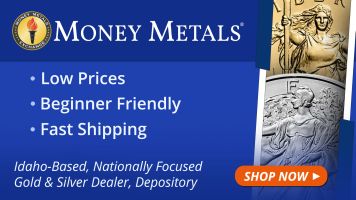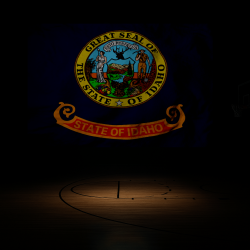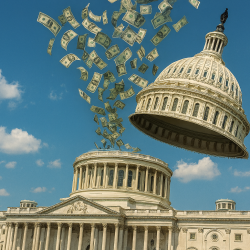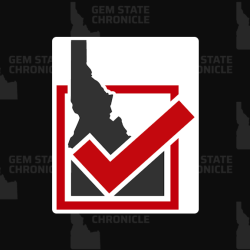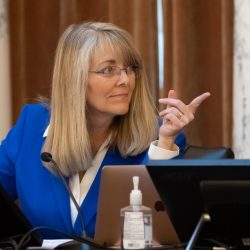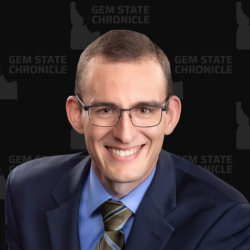The question of how to handle federally owned public lands has vexed Idaho and other western states for more than a century. As western territories achieved statehood, the federal government retained vast swaths of land, sometimes more than half the state. Many expected this land to be given to the states, as was regularly done east of the Rocky Mountains, but most was instead maintained under the auspices of the National Park Service, the U.S. Forest Service, and the Bureau of Land Management.
It has been interesting to watch the debate on this issue grow and evolve over just the past year. Conservatives have long lamented federal control over land within our state’s boundaries, especially when the feds mismanage it and allow wildfires to threaten farms and homes. The solution seems simple: find a way to force the federal government to cede control of those lands to the states.
Yet that brings up two new problems. First, the cost of managing these lands would outstrip our revenues, meaning either raising taxes or selling the land to private developers. Second, our state constitution requires public land to be used to generate revenue. Idaho uses revenue from timber sales on state-managed endowment lands as part of the funding for public schools. If the federal government suddenly divested millions of acres of public lands, would Idaho be required by law to sell it to the highest bidder?
The issue came to a head during debate over President Trump’s “One Big Beautiful Bill” when Sen. Mike Lee of Utah attempted to insert an amendment requiring the sale of certain federally managed lands. Social media pressure, led by Idaho veteran and author Braxton McCoy and others, eventually forced Lee to withdraw the amendment. Idaho’s congressional delegation issued statements opposing it.
If you want to go deeper into the background of this issue, here are some previous articles on the topic:
- October 1, 2024: The Public Land Question Continues, by Rep. Heather Scott
- October 2, 2024: The Question of Federal Lands, by Brian Almon
- January 17, 2025: Idaho Lands in Idaho Hands, by Attorney General Raúl Labrador
- May 3, 2025: Stick to the Devil You Know, by Patrick Payne
- June 17, 2025: Should We Sell Our Public Lands? by Brian Almon
- June 24, 2025: The Public Land Sale No One Asked For, and Why the GOP Should Drop It Immediately, by Jonathan Keeperman
What began as simply trolling Sen. Lee on Twitter quickly coalesced into a diverse coalition of ranchers, hunters, shooters, and others who have a deep appreciation for public lands and want to maintain them for future generations.
In early July, Braxton McCoy announced the formation of the Sagebrush Institute, dedicated to the conservation of America’s natural resources from a conservative perspective.

A few days later, McCoy joined Tucker Carlson to discuss opposition to the Lee amendment and what he hopes to accomplish going forward:
On Friday, August 15, Sagebrush leadership joined Sen. Ben Adams for the unveiling of a proposed constitutional amendment to protect Idaho’s public lands:
If passed by the Legislature next winter and approved by voters in November 2026, the amendment would ensure that any federal lands acquired by Idaho in the future would be placed into a permanent public trust that could never be sold and must be maintained for multiple uses. Current state endowment lands would remain under existing law.
I was on my way to Adams’ announcement event in Pine when I ran into car trouble halfway there and had to be towed back. I still managed to attend a panel hosted by Sagebrush in Meridian last night. Adams and McCoy were joined by gun enthusiast Charlie Coks and journalist Hal Herring, who, from what I gathered, has forgotten more about the history of public lands than most people will ever know.

Sen. Adams laid out his proposed constitutional amendment, and then the panel discussed the purpose of Sagebrush and took questions from the audience. McCoy explained that Sagebrush aims to work with the public and with representatives of federal and state agencies to facilitate the use and protection of public lands. He talked about a project the organization has already undertaken in Montana to restore riparian land to better serve both ranchers and wildlife.
Much of the discussion focused on the distinction between “government-owned land” and “public land.” Adams recalled that, as a missionary kid growing up in post-Soviet Ukraine, there were many areas owned by the state but off-limits to the public. Such concepts are not unique to the former USSR, however. In recent weeks, the provincial government of Nova Scotia, Canada, has banned citizens from even entering forests, ostensibly due to wildfires.
I have heard arguments that any form of public lands in America is essentially socialism and should all be sold to the highest bidder. Hal Herring pushed back on that idea, saying that Idaho’s public lands have helped maintain a culture of liberty ever since statehood. He emphasized that it’s not about trusting the federal government, but about keeping pressure on the government to maintain the public trust.
Someone in the audience asked how to convince fellow conservatives that conservation is not a left-wing issue. Braxton McCoy answered that conservation is essentially a nationalist proposition—preserving this nation for our descendants in the same way our forefathers bequeathed it to us.
Additional discussion touched on how centuries of overlapping and sometimes contradictory laws affect public land use, how payment in lieu of taxes (PILT) falls short of covering the cost of maintaining federal lands, and what it would take to allow mining and timber industries to bring jobs back to smaller communities.
I came away optimistic about what Sagebrush can do. It’s long past time that the national conversation on conservation was led by conservatives rather than anti-human leftists.
Following the outcry over Sen. Mike Lee’s proposal to sell public lands, I heard from the staff of one of our federal delegates that it generated more public comment than any single issue had in many years. I don’t think people like the idea of our public lands being sold, but neither do they believe the federal government is doing a good job managing them. Remember, it was the feds who attempted to turn Lava Ridge into a massive wind farm to generate electricity for Californians, against the wishes of nearly everyone in Idaho.
Does Sen. Adams’ proposal answer the conundrum I raised nearly a year ago about how to take control of federal lands without risking them being turned into high-density housing? By presenting the amendment now, in August 2025, lawmakers and citizens have more than four months to debate it before the start of the 2026 legislative session. What do you think?
In the meantime, check out the Sagebrush Institute and see what they’re all about. Let’s continue the conversation and figure out a way to leave the best country and state we can to our posterity.
Gem State Chronicle is a reader-supported publication. To receive new posts and support my work, consider becoming a free or paid subscriber.
About Brian Almon
Brian Almon is the Editor of the Gem State Chronicle. He also serves as Chairman of the District 14 Republican Party and is a trustee of the Eagle Public Library Board. He lives with his wife and five children in Eagle.


